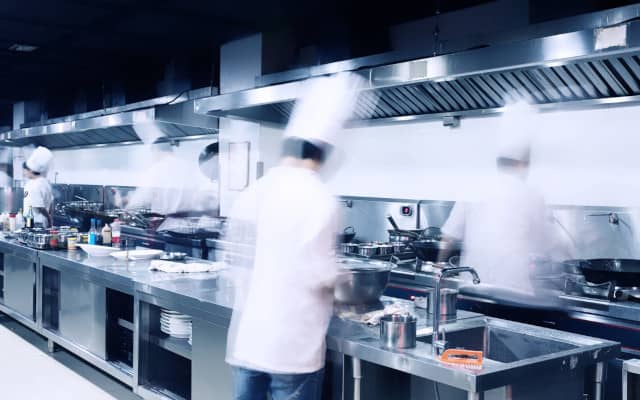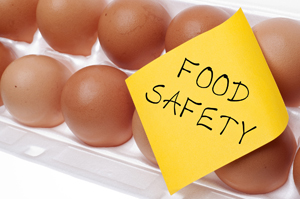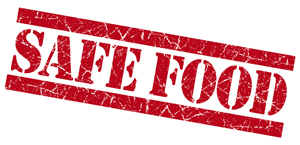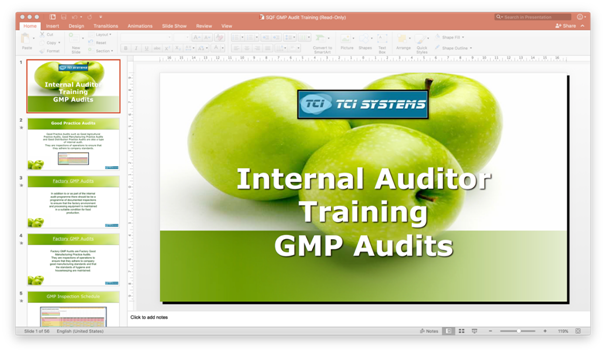
Top 10 Food Safety Tips for Restaurants and Commercial Kitchens
Food Safety Tips
Food safety is one of the most important aspects of running a restaurant. Read on to learn about the top ten food safety tips.
You’re surely aware of salmonella, E. coli, listeria, and norovirus — but did you know that there are over 250 food borne illnesses? Each year, says the Centers for Disease Control and Prevention, 48 million people get sick from a food borne illness. Of those, some 128,000 must be hospitalized, and 3,000 die as a result of getting sick from poor food handling practices. If you supervise a restaurant or commercial kitchen, it is absolutely imperative to understand food safety. We’ve compiled a list of food safety tips to get you started.
Hand It to Safety
One of the most important tips to help keep your commercial kitchen safe is good, old fashioned hand washing. “Employees Must Wash Hands” is more than just a mandatory poster on the kitchen, bathroom, or break room wall. Make hand washing an iron-clad rule. Train your employees in proper hand washing procedures.. And administer strict and swift consequences for those who don’t follow this rule.
Make Gloves Mandatory
In addition, your workers should be trained in the proper use of gloves. Whenever someone is preparing food in a commercial kitchen, they should be wearing gloves. Not only that, but they should change gloves frequently. New gloves should be worn each time the cooks switch from raw to cooked food, for example, and vice versa. Far too many food service workers see gloves as magical shields that somehow render germs powerless, no matter what that person does with their hands. If you see staff members wearing gloves while scratching or touching their skin, and then handling food without changing the gloves, stop them. Retrain your staff as necessary.
Clean and Sanitize Equipment Daily
Of course, the equipment in the kitchen must also be cleaned and sanitized not just on the regular, but properly. Your https://www.foodsafetynews.com/restaurant-inspections-in-your-area/ may have specific requirements surrounding food sanitation, so make sure to ask. In general, you won’t go wrong with hot, soapy water and/or commercial bleach. Wash down all dishes, prep containers, pots and pans, utensils, cooking surfaces, cutting boards, and countertops. Sweep and mop not just the kitchen proper, but also the coolers, freezers, and storage areas.
Set a Regular Deep Cleaning Schedule
It’s also a smart idea to set a firm schedule of how often the entire kitchen should be scrubbed down and cleaned out. Asking your employees to take care of heavy-duty cleaning “as needed” or “when they have down time” is asking for a dirty kitchen that will fail a health inspection. During a deep clean, tackle the ovens, grills, fryers, and appliances. Don’t forget grease traps, range hoods, fans and vents, lighting fixtures, and the like.
Avoid Cross Contamination When Storing Food…
Raw meat and poultry should be kept entirely separate from their cooked counterparts. In addition, keep them away from vegetables, prepared sauces, rolls or bread, and any other foodstuff. This practice ought to be a no-brainer. Anyone who’s ever watched even one episode of “Kitchen Nightmares” knows that raw chicken can’t be kept in a bucket with cooked steak. But you’d be surprised how many shortcuts busy kitchen staff will resort to! The same policy of strict separation goes for knives, cutting boards, utensils, mixing and prep bowls, trays, storage containers, and thermometers. You must have separate prep and cooking tools and supplies for raw poultry, raw meat, raw seafood, cooked proteins, vegetables, and other foods.
Make Proper Food Storage a Priority
Do you understand how different types of food — dry vs. wet, hot vs. cold, vegetables vs. meats — must be stored? Do your employees? You can be certain that the health inspector does, so you should too. Several factors must be taken into consideration when storing food. Ventilation is important, as is temperature. Container sizes, how those containers are sealed, and how food is rotated in and out of containers and storage areas are all crucial to safety in commercial kitchens. Never store food directly on the floor, even if it’s in a box or bin. Never store meat on upper refrigerator or walk-in shelves, where it could potentially drip onto other ingredients underneath. Make sure your employees understand and follow all protocols related to storage.
Follow the Rule of First In, First Out
Want to make certain that your ingredients are as safe as possible, while minimizing the amount of food you need to discard? Be strict about following a “FIFO” policy. FIFO stands for “First In, First Out.” It means that the oldest supplies should be used up first. There are two super simple ways to accomplish this. One is to label every box, bag, package or container with the date it arrived in your kitchen. Then, place it behind any existing stock of that same product or supply in the walk-in or on the shelves. That makes it easier for busy chefs to grab the oldest product first. While FIFO might not be quite as exciting as YOLO or even BOGO, it will help your restaurant or commercial kitchen run more safely and efficiently.
Make Sure Storage Temperatures Are Right
According to the Food and Drug Administration, food should be keep at 41°F or below, while hot food needs to reach 135°F or above. This is to ensure that harmful bacteria never gets a chance to grow. Keep a thermometer in the refrigerator as well as in the freezer. The refrigerator should operate at 40°F or below, while the freezer temperature must be 0°F or below.
Cook All Food to Temp, Too
Similarly, cooking food to the proper temperature will also prevent food borne illness (as well as dishes returned to the kitchen for being undercooked!). Chicken must be cooked to 165°F. Ground beef, veal, lamb, and pork should reach 160°F. Train your cooks to use thermometers often, rather than relying on the look or feel of a dish to know if it’s thoroughly cooked.
Food Safety Tips Are Not Enough
We’ll be honest: these food safety tips are fairly elementary. Most home cooks understand them, and most of your workers probably know the basics of keeping things clean and sanitary, too. In order to truly feel confident that your commercial kitchen or restaurant is in compliance with all necessary regulations and guidelines, contact us. We’ll be able to better assess your needs, and help you achieve compliance, by knowing more about your kitchen!



